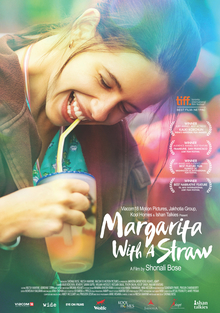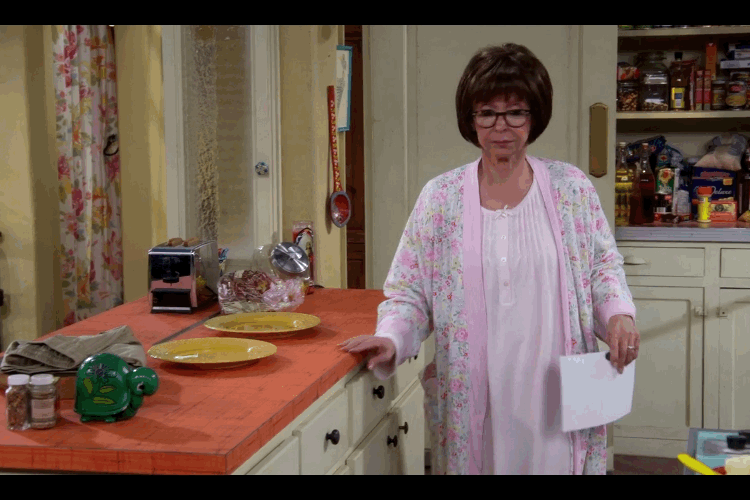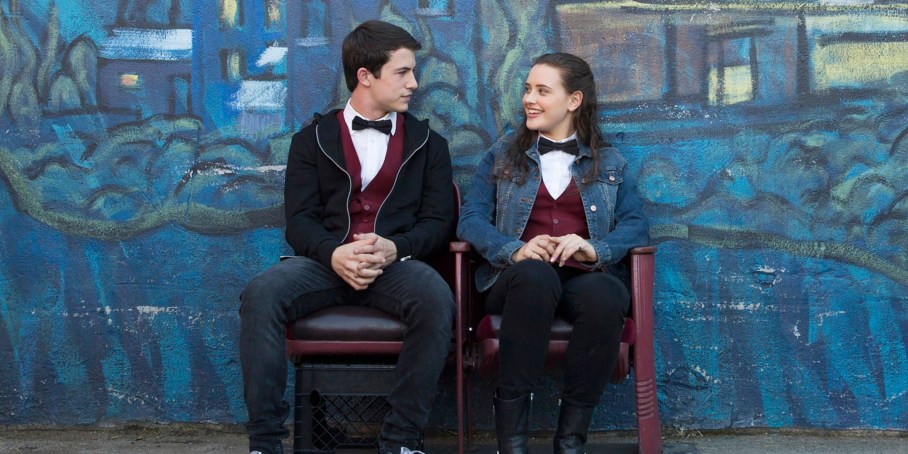
Alex Garland comes back with yet another intriguing science fiction blockbuster highlighting how sought after technological advancements can take a turn for the destructive. He creates a film that makes us re-evaluate our life choices, should we be encroaching upon curious territory? Should we be delving into the deep dark unknown of our modern world? These are the questions we glance over and sweep under the rug marking them as exaggerated anxieties. But they are real. Garland hits us straight in the mind and in the gut with a mind-blowing envisioning of supernatural life forms and their affect on mankind. With a stellar cast led by a league of superwomen, Annihilation packs a steady, yet stinging punch in its story of five women entering a mesmerising portal of the unknown in search for answers that may or may not save humankind.
The story centres around a lonely Lena, (Natalie Portman) an ex solider turned biology professor. Her Special Forces solider husband, Kane, (Oscar Isaac) had been away for over a year, but makes a sudden, unnerving return, saying strange things and then falling ill. As a result, we are introduced to a top secret government mission into the ‘shimmer’ – an electromagnetic field within which mutated landscapes and creatures exist. Kane and his team ventured into the ‘shimmer’ to explore how and why it has formed, with just Kane returning, but not to safety. Falling into a comatose state, Lena decides she must enter the ‘shimmer’ in search for answers about her husband’s condition. She is accompanied by a group of women from different backgrounds of science – Ventress (Jennifer Jason Leigh), a psychologist and leader of the mission, Anya (Gina Rodriguez), a paramedic, Josie (Tessa Thompson), a physicist and Cass (Tuva Novotny), a geomorphologist.
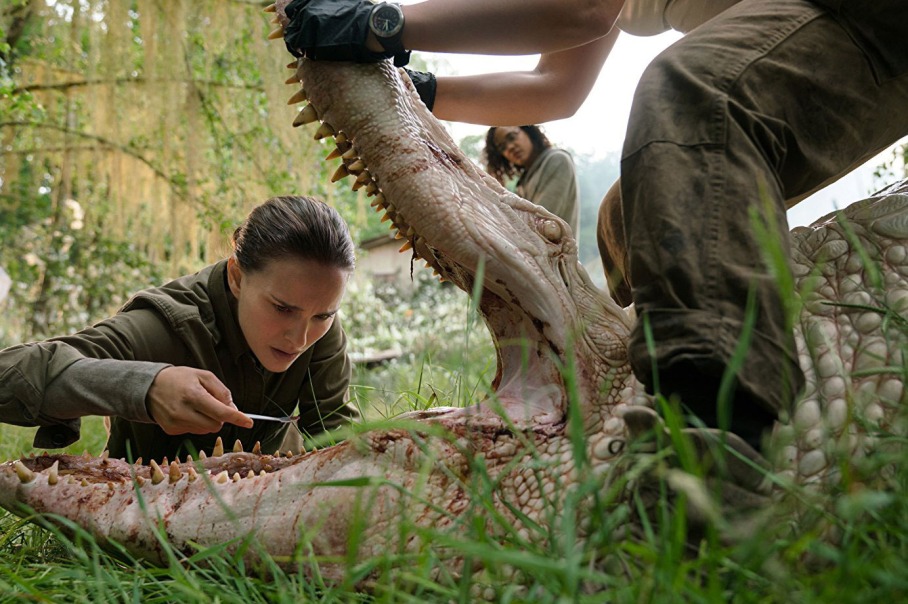
The film has been marketed as not your average sci-fi blockbuster movie, it has its fantasy elements, its horror scenes and its psychological thriller breakdowns. But Garland takes it one step further with an unconventional use of time. We are introduced to Lena with a bang – a seemingly calm woman, having just tackled the ‘shimmer’ and won, being interrogated by a group of men in hazmat suits, close enough to unsettle, but far enough to not be in danger. It seems to mean much more than what the surface allows the audience to understand. The film jumps between this present-day interrogation scene, Lena and Kane, the happily-married couple, and the disturbing facts and revelations that lead to her entry into the ‘shimmer.’ With this he creates an atypical science fiction film, bordering on the dark softness a poetic festival indie would deliver. Although this is no coming of age film for one young, lost character, its a coming of age of mankind and planet Earth in the face of supernatural forces, or even a cautionary tale if you like.
The intense performances from the supporting cast are not ones to be missed in this film adaptation of Jeff VanderMeer’s novel of the same name. Gina Rodriguez plays Anya, a fiery paramedic, adrenaline pumping right down the barrel of her gun towards the ‘shimmer.’ Poles apart from her famed, golden-globe winning role as Jane in TV comedy-drama Jane the Virgin, Rodriguez showcases her acting skills as not just a funny, sweet girl next door. She stands out in this role alongside Oscar Isaac, though they share no screen time, who brings an effortless aura to his role as an untouchable soldier marred by the ‘shimmer’s’ abilities. He is the sole primary male character of the film, sharing secrets and unanswerable questions with the ‘shimmer’, and acting as the motivator for Lena’s descent into the ‘shimmer.’
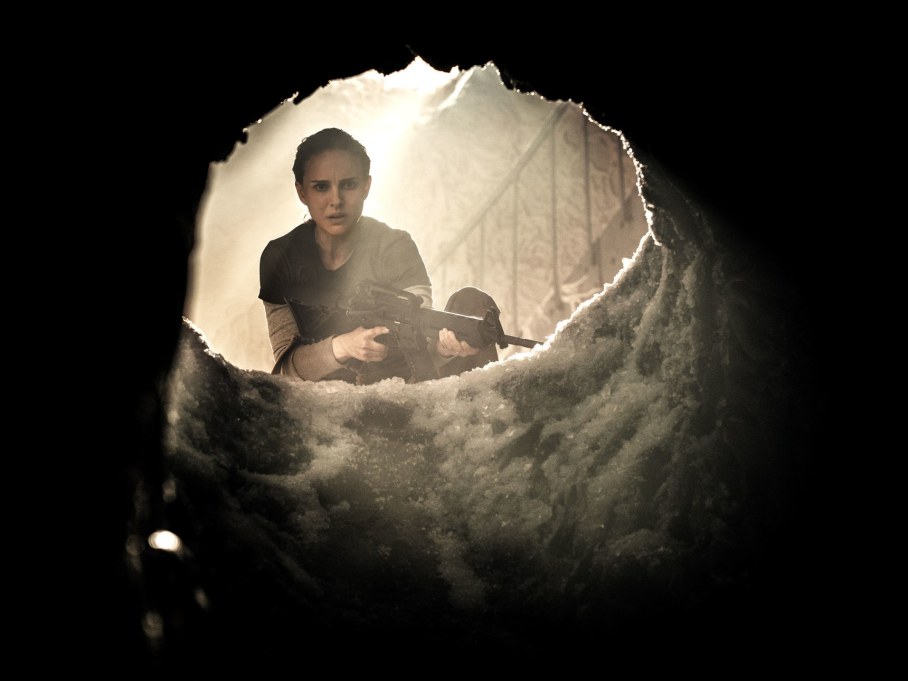
Another element of this film not to be missed is its different take on distribution. The film was released to multiplexes in the States but in a unique turn for a major blockbuster, the UK a d other international rights were handed to popular streaming service, Netflix. It was released a few weeks after its US cinema release, a tactic applauded by some for its embracing of the ever-growing streaming zeitgeist, but unappreciated by others, including the director himself. Garland expressed his disappointment, arguing this type of film was made to be seen on the big screen, but highlights this kind of strategic move can have its pros and cons, labelling it as ‘it is what it is.’ Unfortunately, us viewers and reviewers would see this, on face value, as an interesting move that is keeping with modern times, but we would be mistaken. In reality, a deal was struck between Paramount and Netflix to ease the tension between two producers with differing opinions of the films final cut. Maybe the time will come where Netflix or other online streaming platform releases will become a norm in one sense, but that is a story for another day, time and voice.
Garland envisioned VanderMeer’s novel on screen in an interesting way, moving away from the typical science fiction movie to create a psychological sci-fi horror forcing audiences to turn to their neighbour and question what is real and what is not. Taking a slower than usual pace and soft tone to begin with, Annihilation attacks the senses with a gripping thread from the opening scene to the final climax. Is this film the future that awaits us? Or is it simply an imagined vision we can overcome? These are the questions we are left with in that final scene, then it cuts to black and we return to reality, while a possible real league of female and male warriors out there try to make sense of these questions.






